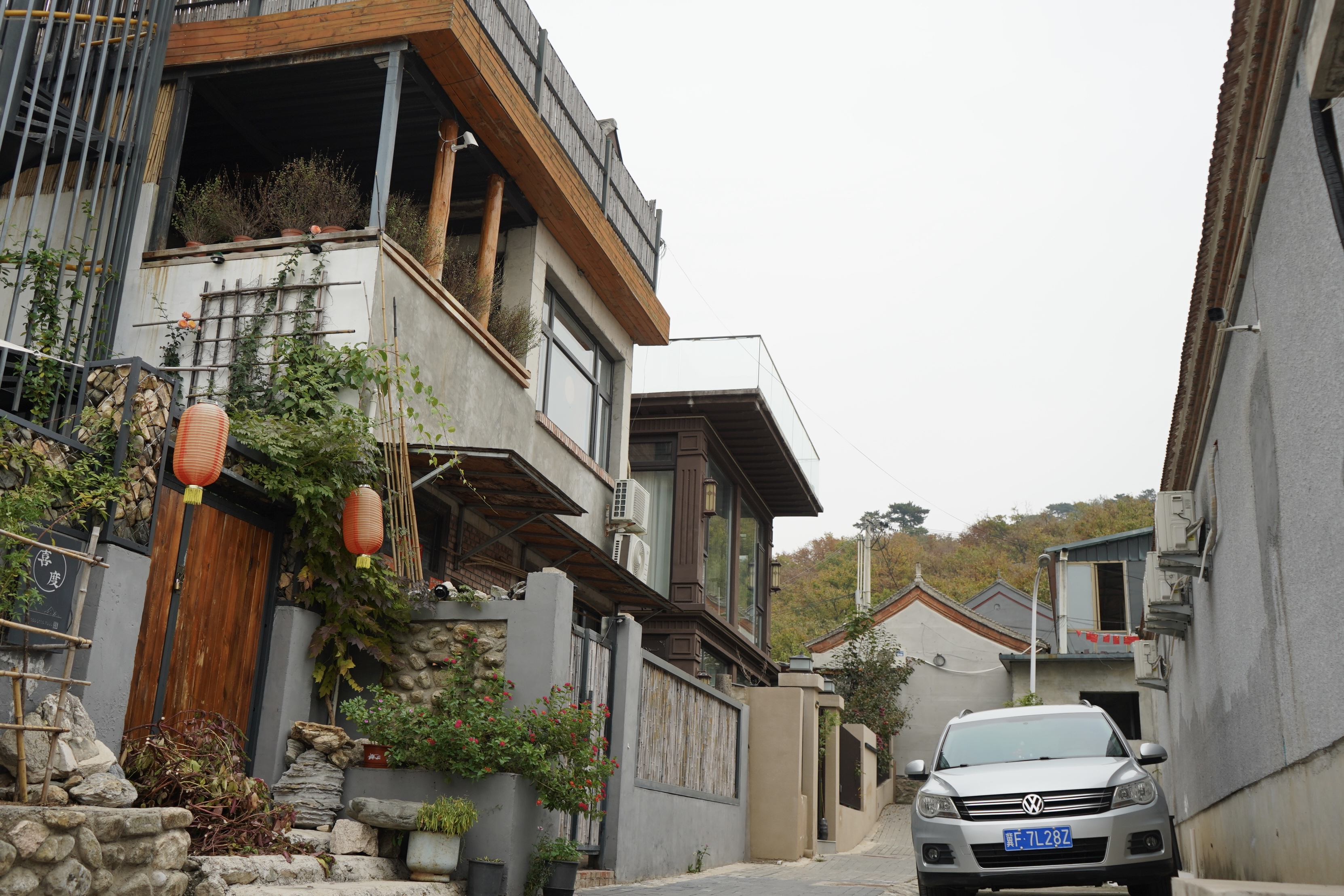
 0 Comment(s)
0 Comment(s) Print
Print E-mail China.org.cn, October 24, 2024
E-mail China.org.cn, October 24, 2024
How did a rural Beijing village transform into a sought-after tourist destination? Journalists toured Beigou village in Bohai town, Huairou district, Beijing, on Oct. 17 to see firsthand how this once-underdeveloped community became a popular tourist hotspot.

Quaintly decorated houses in Beigou village, Beijing, China, Oct. 17, 2024. [Photo by Liao Jiaxin/China.org.cn]
The change in Beigou village can be attributed to the vigorous development of its cultural and tourism sectors, particularly the growth of its homestay industry. Visitors can now stroll along the village's pristine, well-maintained roads, encountering uniquely decorated houses, each with its own character.
"Of more than 150 households in the village, over 30 operate homestays," explained Wang Quan, the village head. The homestay business is thriving, with many vacant homes being leased and thoughtfully refurbished while preserving their original facades and rural charm.
One notable example is the Beijing Brickyard Retreat, the first registered homestay in Huairou district. Redeveloped from a glazed tile factory, it retains much of the factory's original aesthetic and traces of its industrial past. Several old kilns have been completely preserved, while brick elements and modern art are integrated throughout the property.

Autumn colors fill the courtyard at Beijing Brickyard Retreat in Beijing, China, Oct. 17, 2024. [Photo by Liao Jiaxin/China.org.cn]
This blend of natural and artistic design has attracted many international guests and urban white-collar workers seeking a relaxing getaway. Shao Bingyan, manager of Beijing Brickyard Retreat, stated, "Each year, over 30,000 guests dine here, including about 4,000 to 5,000 foreign visitors."
He added that each hotel room features large floor-to-ceiling windows, offering breathtaking views of the distant Great Wall from guests' beds. The nature-inspired decor has proven especially appealing to foreign guests.
Since Wang became village head in 2004, he has focused on improving the living environment and transforming the village's appearance. Under his leadership, the village has cleared illegal structures and enhanced roads.
Huairou district launched a village beautification project in 2018 as part of its rural revitalization efforts, aiming to improve rural infrastructure and living conditions.

Persimmons and chili peppers dry on a house fence in Beigou village, Beijing, China, Oct. 17, 2024. [Photo by Liao Jiaxin/China.org.cn]
Thanks to years of reform and strategic development, Beigou village has established a leisure tourism industry that blends traditional and modern culture, attracting over 60,000 visitors annually and driving rural tourism growth.

Foreign tourists visit Beigou village, Beijing, China, Oct. 17, 2024. [Photo by Liao Jiaxin/China.org.cn]
Katalina Stephaine, a tourist from Poland, visited the Mutianyu Great Wall during the day and chose to dine in Beigou village, just a 10-minute drive away. She said, "This is a very clean and natural area. We really like it."
Nitin Kala from India, restaurant manager at Beijing Brickyard Retreat, moved to Beigou six months ago after living in several Chinese cities, including Guilin. "It's a very peaceful village here," he said.